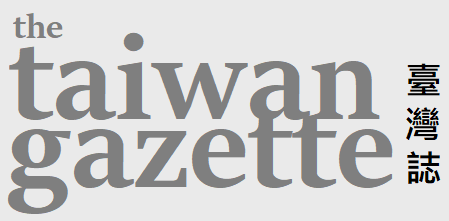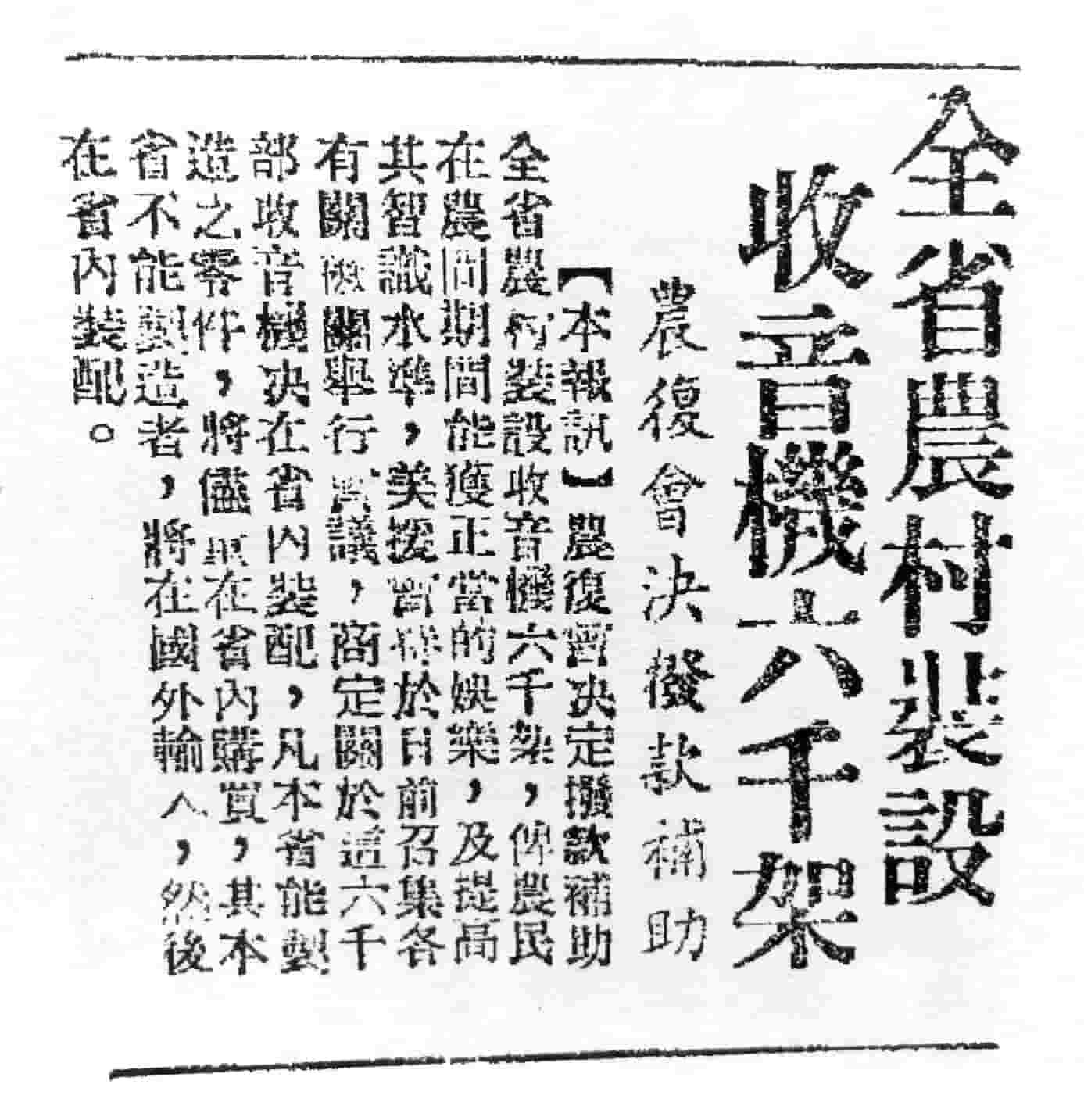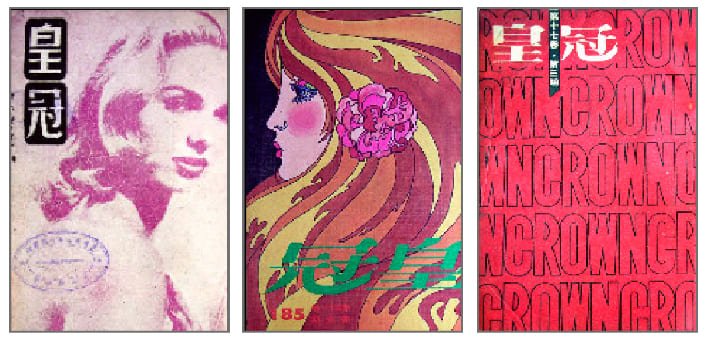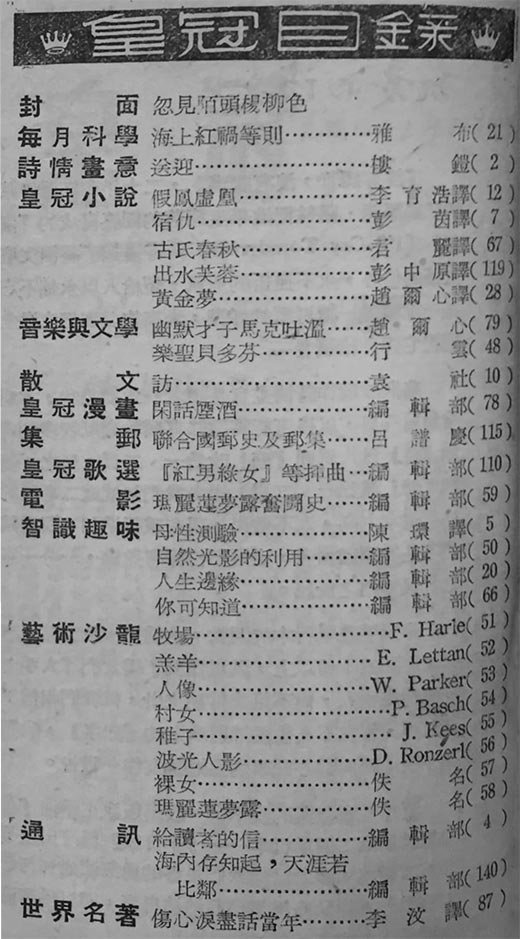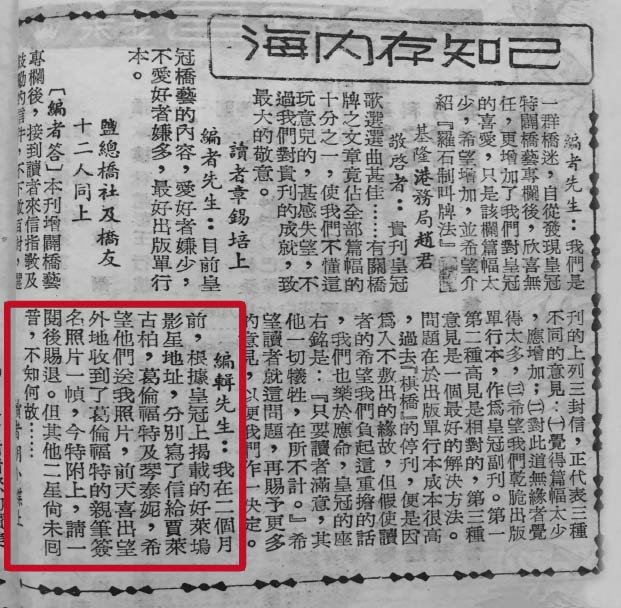Finding A Voice Before Television: Radio and Magazines In 1950s Taiwan
The 1950s Taiwan was commonly known as an era of political suppression. Yet, elements of Taiwanese culture flourished during this period, paving the way for the growth of Taiwan’s entertainment industry. This article considers the role of radio and magazine in giving a “voice” to Taiwanese society under martial law.
By Lo Yi-ping
Translated by George Norris
Edited by Yu-Han Huang
This piece first appeared in the StoryStudio and was translated with the permission of the author and publisher.
Times were tough in 1950s Taiwan: the island was undergoing a political regime change, post-war reconstruction was underway, it was ruled by martial law and there were shortages in essential consumer items. This was a repressive period of high political pressure. Against this backdrop, it seems surprising that elements of Taiwanese culture flourished in this period, giving birth to Taiwan’s entertainment industry. Examples include glove puppetry, Taiwanese opera, film, broadcasting, newspapers and magazines.
In this heavy political atmosphere, these entertainments helped to achieve a delicate balance in the face of overwhelming political control. Entertainments gave people a breath of fresh air. “Repression” and “entertainments” provided a counterbalance to one another, and created a unique scenario.
Back in the 1950s, in the years before television, popular entertainments provided the stage in which Taiwanese played out their emotions, experiences and friendships.
HIPSTER’S GUIDE TO THE 1950S
In the 21st century, hipsters can keep abreast of the latest trends using Instagram, Facebook, Vogue, Juksy, Spotify, Netflix, and more. There is so much information that it is hard to keep up nowadays. It was very different in the 1950s, before television and the internet. How did hipsters stay informed? How did they keep abreast of the latest fashion, culture, Western trends and news?
In this article we will explore the media most popular with the youth of 1950s Taiwan: radio and magazines.
RADIO: ENTERTAINMENT FROM THE SKY
Radio was how most people got their information before television, because it was accessible to ordinary people, including those who could not read. It was the government’s preferred method for disseminating news, as they could broadcast information quickly, efficiently, and to a wide audience. Japan’s Hirohito surrender broadcast at the end of the Second World War and the imposition of martial law in Taiwan were both announced by radio.
Taiwanese radio has its roots in the Japanese occupation. To commemorate 30 years of colonial administration in 1925, the Government-General of Taiwan set up a small radio broadcasting station. The first broadcast, although still experimental, was an historic moment for Taiwan. These trial broadcasts continued until 1931, when Taihoku Broadcasting Station was established and radio broadcasts became regular. However, in those early days it was not easy to access. Listeners needed to buy a radio, obtain a radio receiving license, and pay a monthly fee.
Because of the equipment costs and monthly fee, the first listeners were mostly middle class Japanese. Regular people could not afford a radio, but there were plentiful opportunities to listen in public institutions, schools, and public places such as restaurants, cafés, and tailors.
After the war, the KMT Government took over the broadcast system originally founded by the Japanese. In order to further promote the use of the Mandarin language, they also encouraged the establishment of private radio stations. In the 1950s, the Broadcasting Corporation of China launched its own radio sets, supported by US aid funds. This succeeded in raising radio ownership from 300,000 sets at the end of the colonial period to 1 million in just 10 years. Ownership rose from an average of one radio for 20 households, to one between two. More Taiwanese owned radios than read newspapers, and it became the main channel of news and information.
“6,000 radios will be installed in rural areas”
Radios were supplied to Taiwanese farmers with US assistance. Radio provided agricultural knowledge, as well as entertainment.
Source: Cheng Hsin Daily News , 1953
Total number of registered radios 1928 - 1962. 1962 was a landmark year for two reasons: radio registrations surpassed one million for the first time. Also in that year Taiwanese television broadcasting began. New radio registrations would never again grow as quickly as they did in the 1950s.
Source: Lin Guo-sian “Constructructing Anti-Communist Ideology in Daily Life - A Study of Radio Broadcasting Magazine, 1952-1956". Bulletin of Academia Historica, No. 14 (December 2007), p. 190.
Radio broadcasting flourished with government support. There was an increasingly diverse range of programmes catering to all ages, and these programmes informed or entertained. Programmes included news, children’s education, Taiwanese opera, variety shows, Mandarin pop songs, rock, and classical music. Before the advent of television, radio was the best form of entertainment for most ordinary people, providing special comfort to those who were lonely or experiencing hardship.
Listening to the radio is a family favourite form of entertainment. Children’s shows give parents some peace and quiet, opera buffs can enjoy Peking opera, and Western music has become increasingly popular. Listening to the radio at mealtimes somehow seems to spice up the food. Before settling down to write, I often choose a music programme on the radio to clear my mind. Gossiping neighbourly Taiwanese old ladies usually end their chats by “I am going back for rajio!” It’s time for Taiwanese opera. Radio has indeed entered homes from all walks of life.
Contributed by a reader of United Daily News, May 5, 1955
The 1950s government used radio as a means to “uplift the people as well as to fight the communist threat from China and the Soviet Union.” There was strict censorship, even of music programmes. For example local dialect music was restricted even Mandarin songs were subject to ideological censorship. The government promoted patriotic songs to strengthen political unity, and many other songs were classified as “decadent music.” Many radio stations gradually transformed into government propaganda outlets, and their entertainment value greatly diminished.
Against this backdrop, the Armed Forces Network in Taiwan (AFNT, the predecessor of ICRT) radio station took on a more meaningful role. Because of its diplomatic immunity (as it was primarily a U.S. institution), it was protected from KMT government interference. It became virtually the only “free” radio station in Taiwan outside of the censorship of martial law.
Even by today’s standards, AFNT was remarkable. It broadcast 24 hours a day, 7 days a week, entirely in English, with excellent music, DJs who didn’t interrupt, and it was free of advertising.
AFNT broadcast NBA basketball and Major League Baseball games on weekends. Throughout the week there was interesting news and all types of music such as rock and roll, chart, jazz and country. The daily “Time Machine” show broadcast old songs from 8 to 9pm, while the lunchtime show “A Little Bit of This and a Little Bit of That” introduced its US military audience to Taiwanese food, travel and social activities. At midnight the airwaves briefly fell silent, until a sinister male voice introduced “The Other Side”, and electric guitar and wild drumming kicked off the heavy metal show. Many young people looked forward to this midnight show; the silence of the midnight hour juxtaposed with wild rock made for an exciting experience.
It seems barely conceivable that the seemingly insignificant radio could play such a large role in the dissemination of difficult-to-access information and music, stirring indignation among the youth. It was as if these young people looking to broaden their horizons did not just hear music, but the sound of limitless possibilities. Simply closing their eyes and listening was a way to escape the system.
It is no surprise then, that the American Forces Network became a favourite of young Taiwanese. It was a fresh, independent, and introduced overseas news, information and fashion from Europe and America. Its influence spread beyond the airwaves, the audience even formed their own radio clubs at a time when there were few communication tools. These clubs were a completely new channel for young people to make friends face to face.
AFNT Winter 1969-70 Schedule: Monday to Friday. It shows a rich variety of themes, news, music and sports broadcast 24 hours per day. (Note: TP is Taipei, TN is Tainan, CCK isChing-chuan-kang Air Base in Taichung)
Source: US Taiwan Defense Command website http://bit.ly/2HkzBcZ
This schedule shows the types of radio entertainment provided by AFNT for young Taiwanese.
MAGAZINES: AN INTRODUCTION TO POPULAR CULTURE
There was a proliferation in journals and magazines after the war. Some were imported from mainland China, some were local Taiwanese creations, and some came from the publishing houses which had relocated to Taiwan with the KMT government in 1949. The industry flourished, from just over 40 after the war, to 157 by 1951, and over 500 by 1960. One could say that Taiwan experienced a “Great Leap Forward” in journals and magazines in the decade before television.
But as we have seen, this post war period was one of widespread political repression and this impacted the publishing industry. Any coverage of politics and current affairs had to follow the official line. But there was greater latitude in the less sensitive fields of entertainment, art and literature, which were viewed as less important by the authorities. These themes became a route for foreign ideas to enter Taiwan and they became popular with young people.
These journals and magazines took their lead from American cultural trends. They were influenced by the government’s pro-US policy, US economic aid and military presence. New Taiwanese publications took their inspiration from Life and Time magazines. They reported the latest Western lifestyle, entertainment, art and literary trends. At first blush, these types of magazines appear lighthearted, non political, and almost folksy. But they took on a special significance in this era of political repression. They provided a free space to smuggle in questioning ideas and to counter mainstream cultural thought. Although never a powerful force, these journals and magazines managed to escape the attention of officialdom. Because of this, they survived and spread.
Crown (《皇冠》) is a good example. Regardless of the cover or contents, it took the American Dream as its motif, with an independent style that was easy to read. It thrived by introducing translated literature, Western music and Hollywood films. They never looked down on popular culture, and sought to support breakthroughs and new themes. This, together with their steadfast refusal to listen to critiques from literary circles, enabled them to discover and promote the romantic novels of Taiwanese author Chiung Yao (瓊瑤), paving the way for a new era of popular Taiwanese literature. They even introduced the Italian concept of “film on paper” using images and brief descriptions to adapt Chiung Yao’s novels.
Whether or not you are a literature aficionado, there were many reasons to love Crown magazine. No wonder it always sells out first. Since its launch in 1954, it has never skipped an issue, making it Taiwan’s longest running private cultural magazine.
Crown magazine front cover showing Western influence. It marked a new beginning for Taiwanese publishing.
Left: A Hollywood actress exposing her shoulders; Center: Western style illustration; Right: full page etchings in English text, rich in design.
Source: (left) Crown (series 8, volume 2, 1957 ); (center) Crown (volume 185, 1969); (right) Crown (series 17, volume 3, 1962)
This table of content shows the breadth of content: science, creative literature, classical and pop music, films and gossip. It also includes lifestyle themes: stamp collecting, cartoons and humour.
Source: Crown (series 5, volume 4, June 1956)
This Crown article discusses the meaning of a popular Western music song, and provides the musical score for interested readers to learn to play.
Source: Crown (series 5 , volume 4, 1956)
Readers letters expressing their gratitude for the joy that Crown magazine brings into their lives.
Source: Crown (series 1, volume 5, 1954)
GOVERNMENT CONTROL
1950s Taiwan was a “silenced era”. Radio and magazines tried hard to make their voices heard, and they did indeed succeed in entertaining the masses. But precisely because of their success at attracting an audience, they came under political pressure to be used as a propaganda tool of the repressive government.
Radio broadcasting was used as a propaganda tool from the very earliest days. In the Second World War, Taiwanese based radio broadcasts were used by the Japanese to retain broadcasting supremacy over the airwaves of Fujian and China’s Southeast coastal provinces, as well as for wartime propaganda. When the KMT took control over Taiwan, they not only took over the Japanese broadcasting equipment, but also a similar ruling approach and ideology towards the broadcasting system. Taiwan Hōsōkyokai (1931-1945) became “Broadcasting Corporation of China” (BCC, 1949-2005) and was put under the direct control of the KMT’s Central Broadcasting Administration, Central Executive Committee.
Note: Broadcasting Corporation of China, formerly known as Central Wireless Broadcasting Station, was founded in Nanjing in 1928 and played a pioneering role in radio broadcasting in the Republic of China. In 1949 it moved with the KMT to Taiwan and its mission was to promote culture. It held the call sign “Voice of Free China.” In 2005 BCC was formally separated from the KMT and it became an independent non governmental media organisation.
Looking through the Radio Broadcasting Magazine, which records broadcasting programmes in the postwar era, one can readily see that the evening broadcast was used for propaganda. This was particularly impactful as all stations were required to simultaneously relay the evening schedule written and edited by the BCC.
The weekly broadcast schedule from 1950. It shows how radio was used to gain support for government policies and to build a national unity. Examples include the shows: “Anti-Communist Songs”; “Perspectives from Behind The Iron Curtain” (witness-reporting from anti-communist patriots); “The Three Principles of the People in Taiwan” (promoting the government).
Source: Lin Guo-sian “Constructructing Anti-Communist Ideology in Daily Life - A Study of Radio Broadcasting Magazine, 1952-1956.” Bulletin of Academia Historica, No. 14 (December 2007), p.202.
The political control and censorship of journals and magazines was overwhelming. The example here taken from Crown magazine shows a juxtaposition between articles about daily life and fierce propaganda slogans.
Patriotic slogans appear in an article unrelated to politics. The slogan on the left reads:
Fight to protect our cultural heritage,
Fight against the annihilation of our nation,
Fight to defend the Republic of China,
Fight for the rejuvenation of the Chinese nation.
The slogan on the right reads:
To fight to save our people, is to fight to save our nation.
To fight for freedom, is to fight for existence.
Source: (right) Crown (series 1, volume 3, April 1954); (left) Crown (series 1, volume 6, July 1954).
Another example which looks peculiar to modern eyes was so-called “reverse-white” censorship. In this example non-political themes such as society, music or entertainment are given a political slant by the censors.
The famous media personality, Sheng Chu-ju (盛竹如) recalls:
“In those days, you could not broadcast any negative news on National Day, such as house fires, murder, robbery, or car accidents. We were not even allowed to report earthquakes.”
“On Chiang Kai-shek's birthday (31st October) there was censorship of inauspicious words in film advertisements in newspapers. For example “Devil’s Raiders” became “XX Raiders”, “Horror Train” became “XX Train” and “Elegy of a Killer” became “Elegy of a XX […] With so much censorship, who on earth knew what the name was?”
Source: Chu ju Sheng, In Front Of The Screen - The Memoirs of Chu Ju Sheng (Taipei County: The Journalist), 41-42.
The examples above show simplistic hard propaganda which was easy to spot. Over time the methods gradually became softer which enabled the government to get those messages closer into people’s daily lives. They used this to subtly generate support for the war preparations, the government and its policies among ordinary people.
The radio drama “Between the Couple” illustrates the use of soft propaganda, according to Lin Guo-sian in his article “Constructing Anti-Communist Ideology in Daily Life - A Study of Radio Broadcasting Magazine, 1952-1956.” The drama focuses on the trivialities of daily life such as tips for washing woollen sweaters, choosing a spouse, and achieving lifelong love. With the exception of just a few political themes, most issues were close to people’s daily lives. This more subtle approach is why “Between the Couple” became the most popular radio show of its time.
Over time, the listener became more and more acquainted with the plot and couple it portrayed, making them relatable to their daily lives. When faced with similar situations, the audience would unwittingly call to mind the radio play, and think “the radio says…”. In this way, rather than opposing, the audience learned to acquiesce when hearing propaganda slogans like “our compatriots in mainland China are in deep trouble, we must quickly fight to liberate them.”
The upbeat, light-hearted, and seemingly innocent atmosphere was in fact infused with carefully filtered information - part of a serious propaganda mission. It succeeded in creating a way of thinking (either consciously or unconsciously) which conformed to the official ideology, in particular the self identification as “Free China” and the goal of liberating the mainland from communist control.
Such sophisticated and pervasive “brainwashing” works on the subconscious, even without the public becoming aware. It gives us cause to reflect in today’s modern era: do we really enjoy freedom nowadays? Or are we unwittingly controlled by others?

